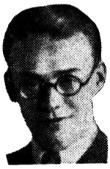Born: Established: 3 Aug 1914 Hertfordshire,
AustLit
 1137150554180580021.jpg
1137150554180580021.jpg
Source: The Sun (Sydney) 4 March 1934, p.27
John Cazabon
John Cazabon
i(10278479 works by)
Born: Established: 3 Aug 1914 Hertfordshire,
Born: Established: 3 Aug 1914 Hertfordshire,
c
England,c
c
United Kingdom (UK),c
Western Europe,
Europe,
;
Died:
Ceased:
22 Jun 1983
Ealing,
London,
c
England,c
c
United Kingdom (UK),c
Western Europe,
Europe,
Gender:
Male
Arrived in Australia:
1927
The material on this page is available to AustLit subscribers. If you are a subscriber or are from a subscribing organisation, please log in to gain full access. To explore options for subscribing to this unique teaching, research, and publishing resource for Australian culture and storytelling, please contact us or find out more.
BiographyHistory
Most Referenced Works
Notes
-
Albert Cazabon, who had much experience in Britain as a film score composer, came to Australia under contract to E. J. Carroll and Dan Carroll and became musical director/conductor of the Prince Edward Theatre orchestra from 1927 to 1936.
-
Norah Cazabon's given name is often spelled Nora in newspapers and journals of the era.
-
This entry has been sourced from research undertaken by Dr Clay Djubal into Australian-written popular music theatre (ca. 1850-1930). See also the Australian Variety Theatre Archive
Last amended 13 Nov 2016 13:15:04

